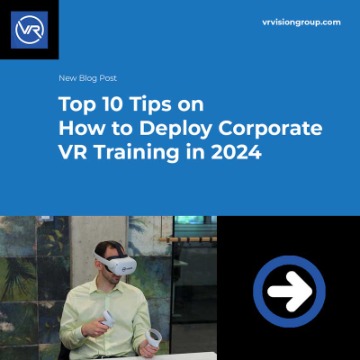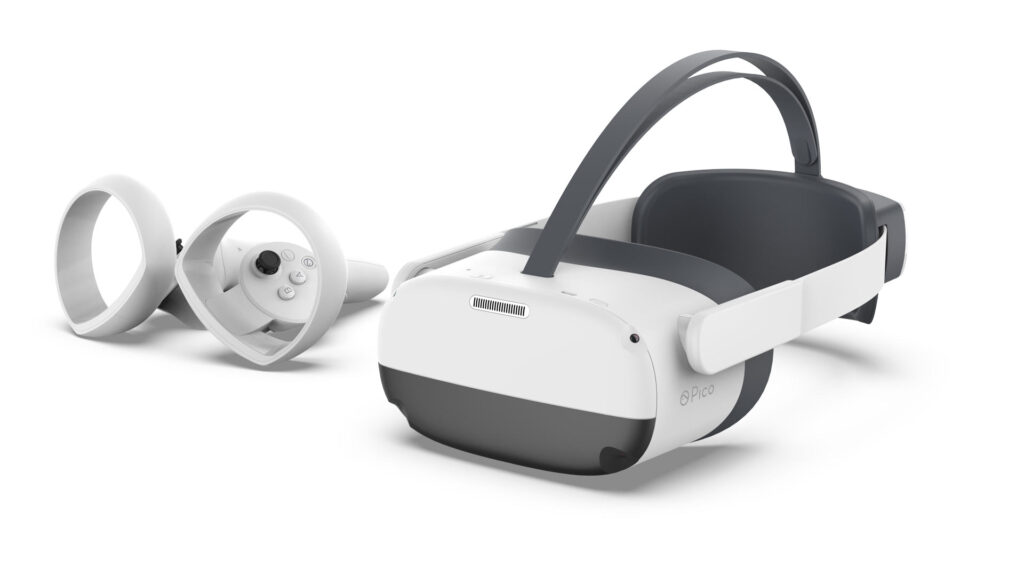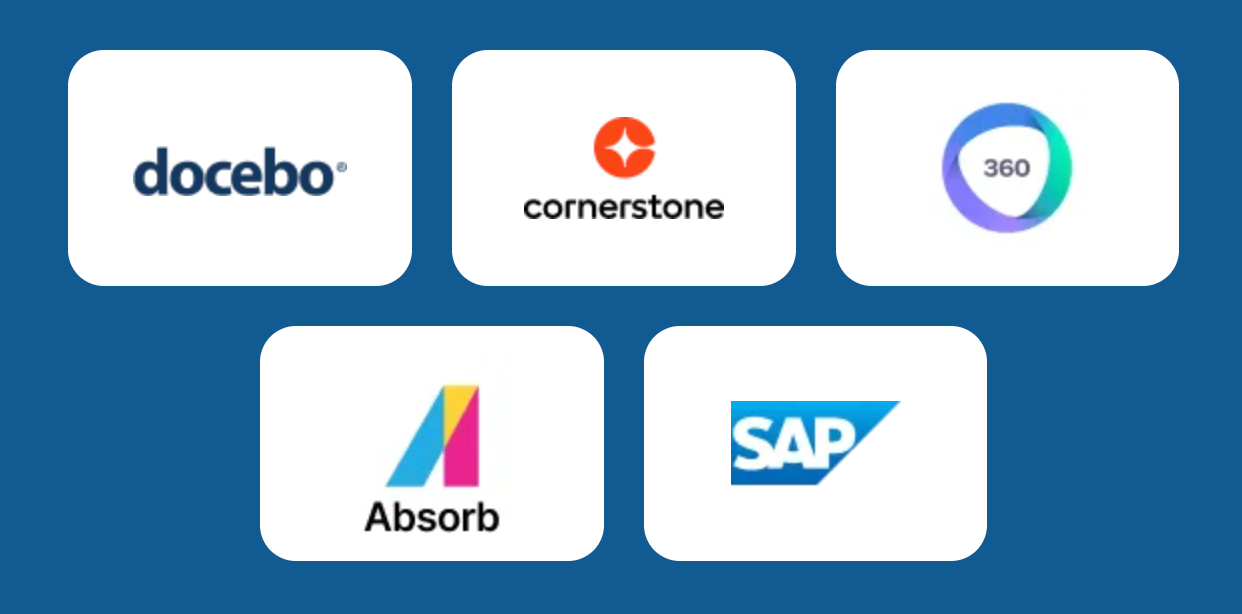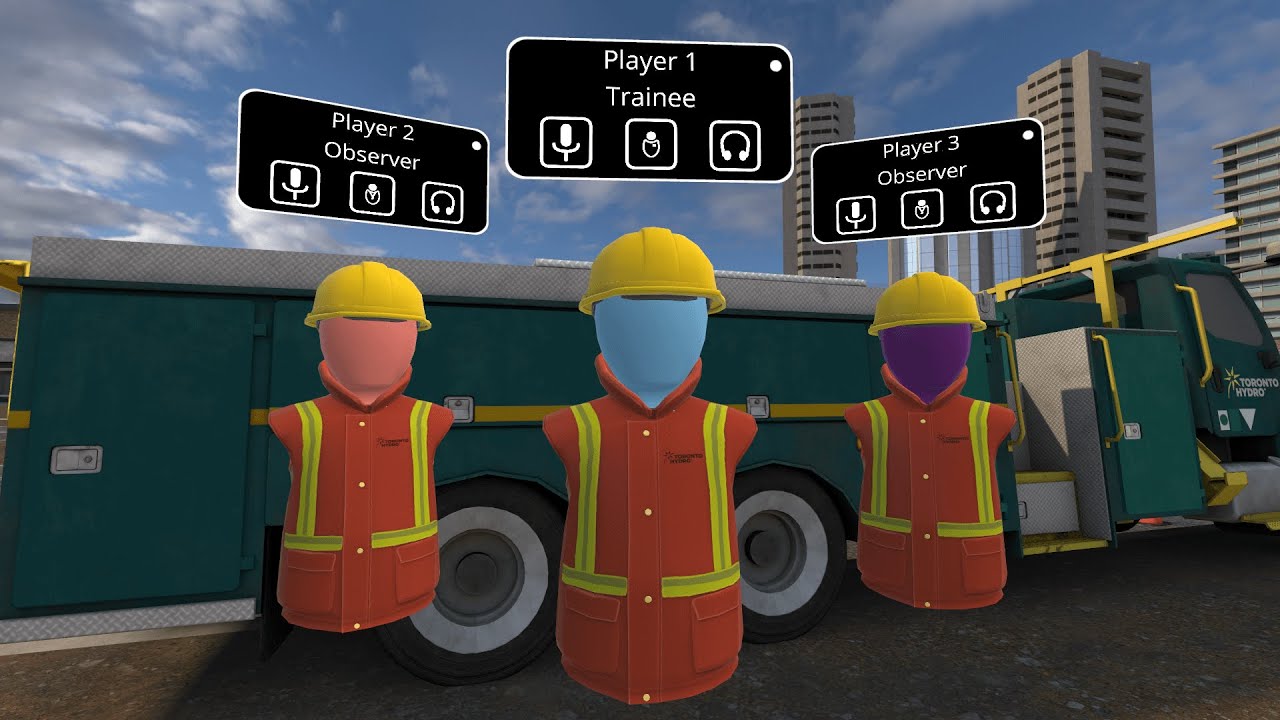GUIDE
How to Deploy Enterprise VR Training in 2024
Elevate Your Enterprise Training Programs with Immersive Virtual Reality Solutions Built for Learning.

KEY TAKEAWAYS
- As we venture into the final stretch of 2024, virtual reality continues to redefine enterprise training by offering immersive, engaging, and highly effective learning experiences. Deploying Enterprise VR training in your organization can lead to improved knowledge retention, enhanced skill development, and a more motivated workforce. However, to maximize the benefits, it's crucial to deploy VR training thoughtfully and strategically.
- Drawing insights from our CEO and industry expert Roni Cerga and our experience at VR Vision, we've compiled the top 10 tips to help you successfully deploy enterprise VR training in 2024.
- Embrace Standalone VR Devices
- Consider an Open XR Framework
- Integrate VR Training with Your LMS
- Utilize Multiplayer VR Training
- Choose the Right Content Format
- Prioritize High Visual Quality
- Measure ROI Effectively
- Address Health and Safety Considerations
- Prepare Your IT Infrastructure
- Plan for Scalability and Future Growth
Embrace Standalone VR Devices
Why Standalone VR is King
Standalone VR headsets like the Meta Quest 3 have become the go-to choice for enterprise VR training. These devices come with built-in computing power, eliminating the need for external hardware or tethered connections. This independence enhances accessibility and simplifies the deployment process.
Benefits:
- Ease of Use: Simple setup and operation reduce technical barriers.
- Portability: Employees can use the devices anywhere, facilitating remote training.
- Cost-Effective: Lower total cost of ownership compared to PC-tethered systems.
Action Steps:
- Invest in standalone VR headsets suitable for your training needs.
- Ensure devices are updated with the latest firmware for optimal performance.
- Provide training sessions to familiarize staff with the equipment.


Consider an Open XR Framework?
Achieve Cross-Platform Compatibility
Using an Open XR framework ensures your VR content is compatible across various headsets and devices. This approach allows for greater flexibility and scalability, especially in organizations with diverse hardware ecosystems.
Benefits:
- Device Agnostic: Content runs smoothly on multiple platforms.
- Future-Proofing: Easier adaptation to new devices entering the market.
- Cost Savings: Reduces the need to develop separate versions for different hardware.
Considerations:
- Some unique features of specific headsets (like advanced hand tracking) may not be fully supported.
- Balance the need for broad compatibility with the desire for specialized functionalities.
Action Steps:
- Collaborate with developers experienced in Open XR standards.
- Test VR content on various devices to ensure consistent performance.
- Stay informed about updates in Open XR capabilities.

Integrate VR Training with Your LMS
Leverage Learning Management Systems for Enhanced Tracking
Integrating VR training modules with your Learning Management System (LMS) is crucial for scheduling, tracking progress, and assessing performance. This integration provides a centralized platform for managing all training activities.
Benefits:
- Centralized Data: Consolidate training records and analytics.
- Automation: Streamline enrollment, reminders, and certifications.
- Enhanced Reporting: Gain insights into training effectiveness.
Action Steps:
- Ensure your VR content is SCORM or xAPI compliant for LMS integration.
- Work with developers to create APIs or plugins if necessary.
- Train administrators on managing VR content within the LMS.

Typical LMS's used for Enterprise VR Training
Utilize Multiplayer Enterprise VR Training
Foster Collaboration and Real-Time Feedback
Multiplayer VR training enables employees to interact within a virtual environment, promoting collaboration and peer learning. This approach enhances engagement and mirrors real-world team scenarios.

Benefits
- Interactive Learning: Participants can role-play and practice interpersonal skills.
- Immediate Feedback: Instructors can observe and guide in real-time.
- Team Building: Strengthens relationships among remote or distributed teams.

Considerations
- Requires more resources for development and bandwidth.
- Ensure all participants have access to compatible hardware and stable internet connections.

Action Steps
- Design training scenarios that benefit from group interaction.
- Schedule sessions to accommodate multiple time zones if needed.
- Provide guidelines to facilitate effective virtual collaboration.
Choose the Right Content Format
Interactive 360 Video vs. Computer-Generated Graphics
Selecting between interactive 360-degree video and computer-generated (CG) graphics depends on your training objectives.
Interactive 360 Video:
- Realism: Offers high-fidelity visuals using real-world footage.
- Best For: Situations requiring authentic environments, like facility tours or customer interactions.
- Limitations: Less interactive; scenarios are predetermined.
Computer-Generated Graphics:
- Interactivity: Allows for complex interactions and dynamic scenarios.
- Best For: Technical training, simulations, and environments that are impractical to film.
- Flexibility: Easier to update and modify content.
Action Steps:
- Assess the level of interactivity and realism needed for your training.
- Consider hybrid approaches combining both formats.
- Consult with content developers to determine the most effective medium.
Prioritize High Visual Quality
Visual Fidelity Matters for Engagement

High-quality visuals are critical in enterprise VR training to maintain immersion and facilitate learning. Visual fidelity impacts user engagement and the overall effectiveness of the training program.
Benefits:
- Enhanced Realism: Improves the authenticity of scenarios.
- User Satisfaction: Increases comfort and reduces distractions.
- Better Retention: High-quality visuals aid memory and understanding.
Action Steps:
- Use advanced filming techniques for 360 videos, such as stereoscopic 3D.
- Invest in high-resolution textures and models for CG content.
- Regularly update graphics to meet evolving standards.
Measure ROI Effectively
Assess Both Tangible and Intangible Benefits
Measuring the Return on Investment (ROI) of enterprise VR training is essential to justify expenditures and guide future initiatives. See the full details of metrics to consider and actionable steps below:
Metrics to Consider:
- Cost Savings: Reduction in training expenses, travel costs, and material usage.
- Time Efficiency: Decreased time required to train employees.
- Performance Improvement: Enhanced skills, productivity, and error reduction.
- Knowledge Preservation: Retention of critical expertise within the organization.
- Safety Enhancements: Reduction in accidents or incidents due to better-trained staff.
Action Steps:
- Establish baseline metrics before implementing VR training.
- Use analytics tools to track performance and engagement.
- Collect feedback from participants to assess qualitative benefits.
From Investment to Impact: The ROI of VR Training Whitepaper
Address Health and Safety Considerations
Ensure a Safe and Comfortable Experience
While VR offers immense benefits, it’s important to be mindful of potential discomforts such as motion sickness or eye strain.
Action Steps:
- Session Guidelines: Limit VR training sessions to recommended durations.
- Physical Space: Provide ample room free of obstacles.
- Hygiene Protocols: Implement cleaning procedures for shared headsets.
User Comfort: Educate users on adjusting fit and settings for comfort.

Prepare Your IT Infrastructure
Support Seamless Deployment and Maintenance
A robust IT infrastructure ensures that your VR training programs run smoothly and are accessible to all intended users.
Action Steps:
- Network Readiness: Ensure adequate bandwidth for content downloads and multiplayer sessions.
- Device Management: Implement systems for updating and maintaining VR hardware.
Technical Support: Provide resources for troubleshooting and assistance.
Plan for Scalability and Future Growth
Think Ahead to Accommodate Expansion
As your organization grows, your enterprise VR training programs should be able to scale accordingly. This means developing initial applications with the end user’s learning and adoption in mind.
Action Steps:
- Modular Content: Develop training modules that can be easily expanded or updated.
- License Management: Choose licensing options that allow for additional users.
Feedback Loops: Establish channels for ongoing feedback to inform future developments.
Conclusion
Deploying enterprise VR training in 2024 presents an opportunity to significantly enhance your organization's learning and development initiatives. By following these top 10 tips, you can navigate the complexities of VR deployment and create impactful training experiences that yield measurable results. At VR Vision, we're dedicated to helping organizations harness the power of virtual reality. Our expertise spans content creation, technology integration, and strategic planning to ensure your VR training programs are successful and sustainable.
Frequently Asked Questions
-
Q1: How do I choose between 360-degree video and computer-generated graphics for my VR training?
Consider the level of interactivity and realism required. Use 360-degree video for realistic environments and scenarios, and computer-generated graphics for interactive simulations and tasks that are impractical to film. -
Q2: What are the benefits of integrating VR training with my LMS?
Integrating with your LMS allows for centralized tracking of employee progress, automated enrollment, and detailed reporting on training effectiveness -
Q3: How can I measure the ROI of VR training in my organization?
Measure both tangible metrics like cost savings and time efficiency, as well as intangible benefits like knowledge preservation, safety improvements, and employee engagement.
The Future of XR Training
By embracing these best practices, your organization can leverage VR technology to create engaging, effective, and scalable training programs. Let VR Vision be your partner in this transformative journey toward the future of enterprise VR training.